Failed recycling-plant plan turned multi-patented project using BIM workflow
We speak to Mr. Guo Yanbing, General Manager of Energy Liaoning, a subsidiary of China State Construction Engineering Corporation (CSCEC), and Ms. Guo Rong, President of LeCheng Energy, about the 510,000m2 GFA Shenyang Urban Waste Industrial Recycling Park. The father-daughter duo worked together to transform a failed industrial park plan into a multi-patented project that secured $244 million in funding for their client.
All media courtesy of LeCheng Energy unless otherwise stated.
BIM award-winning recycling plant project, “Liaoning Province Second BIM Technology Application Competition” in Shenyang, China.
Rong, you were inspired by your dad to be a pro-environmentalist? Tell us more.
Rong: My dad specializes in the theory of environmental management and process design, and has shared the processes of environmental protection engineering with me since I was young. Through our conversations, I discovered a passion for environmental protection. I pursued a major in urban planning twelve years ago, thinking it was about environmental protection when it actually isn’t (laughs). It was a silver lining because that led me to use SketchUp. When I was working on my final project, my dad realized that SketchUp would also be a great tool for his environmental protection projects (2D CAD software is still dominant in his industry today).
My SketchUp skills and passion for aesthetic design in engineering complement my father’s talents. Together, we work towards a common goal of delivering meaningful projects that deliver economic value and protect the environment. I truly find joy at work.
Share with us some background on the recycling plant project.
Yanbing: This industrial park recycles waste from the city of Shenyang, processing 1200 tons of excess sludge from all other treatment plants in Shenyang: 500 tons of river sludge and 4000 tons of construction waste every day. This park processes the highest volume of sludge in China. Its objective is to recycle the waste into usable construction materials, instead of sending them to landfills or for incineration, both of which are harmful to the environment and still require a budget.
This park has a massive production rate of 1,200,000 red bricks per day from the waste. Unlike most unprofitable recycling plants, this $244 million project is estimated to break even in about four to five years.
What was the design focus for this project?
Rong: We mostly focused on harmless waste treatment. Taking one of our patents, “Dehydration Technique,” as an example, all organic waste is subjected to high temperature and pressure and is further processed to break cell walls thoroughly. Consequently, the waste goes through a sedimentation process so water and sludge are separated. Water can be recycled and sludge is processed further to become powdered sludge to make bricks.
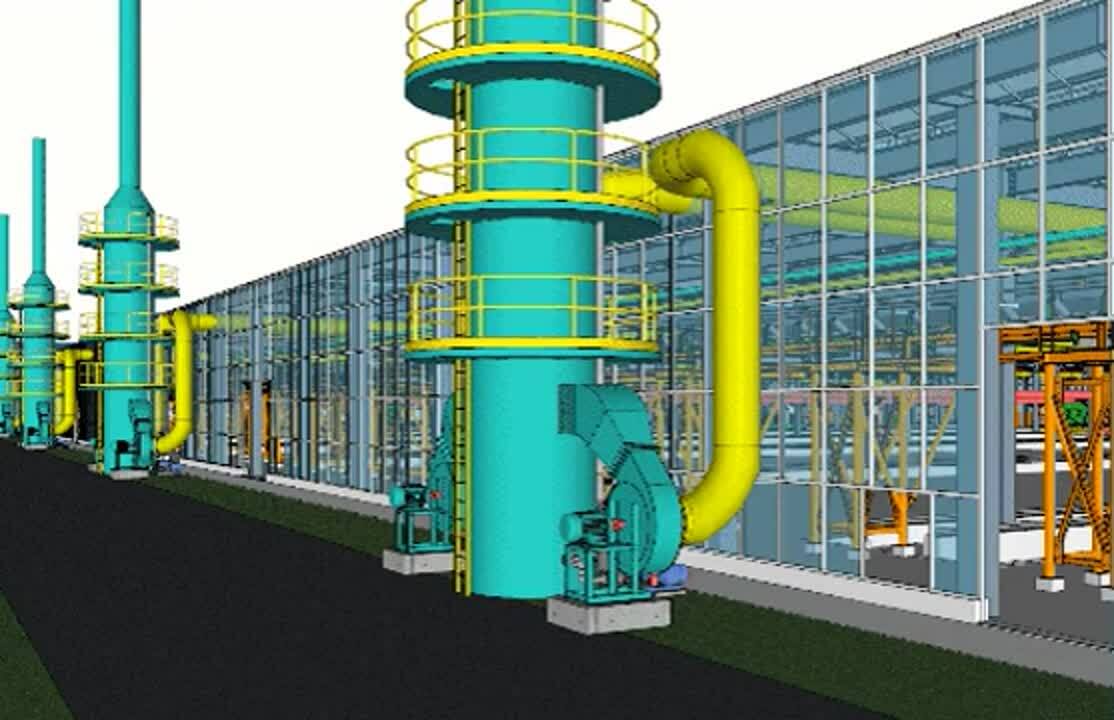
The production line for dehydrated sludge with six deodorizing towers outside the plant to purify the discharged air.
How long did the project take to complete?
Yanbing: The project began in July 2019 with five companies specializing in architecture, thermodynamics, building materials, process manufacturing plants, and urban planning, and they all used different software for their segments.
Using different software in one project caused much disparity between design and construction. The 3D processes were also too complex for traditional 2D CAD software.
Combined with weak measures for environmental protection, the initial recycling plant design did not only have a low production rate but would have caused serious pollution. In an attempt to save the project, our client, Zhongcheng Group, temporarily suspended all work and put out a call for a BIM consultant in March 2020.
Rong: We took over this project in April 2020 and synergized the existing plans by adopting a BIM workflow within SketchUp.
A similar project would usually require six to twelve months, however, we finished in a month doubling the factory’s production-capacity because we used a single software, SketchUp, throughout our entire process.
With 3D modeling, it was a breeze to get approvals as design ideas, methods, and construction procedures could be easily communicated.
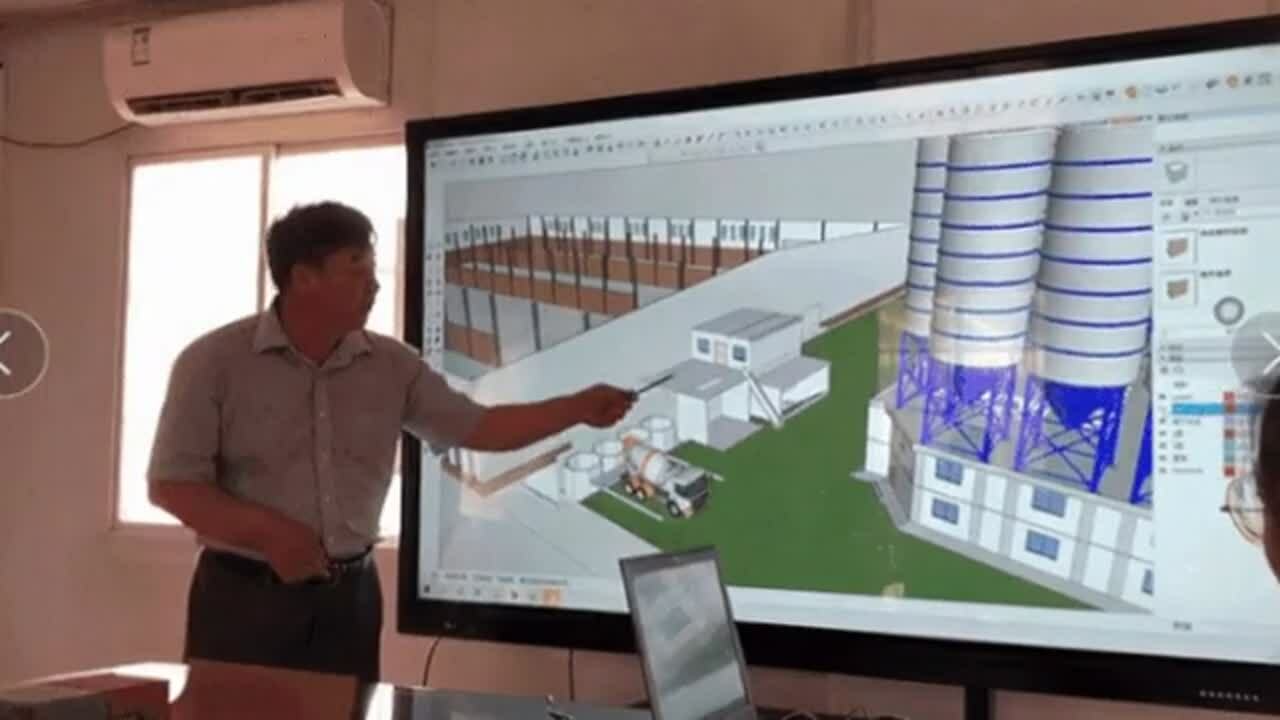
All stakeholders (client, architect, engineer, contractor, facility manager, and plant-process manufacturer) were able to explain, share ideas and concerns about the project easily with the 3D model.
Share with us how using SketchUp is different from a traditional 2D CAD workflow.
Yanbing: I usually start by drafting on paper, and then use a scan of the drawing to model in SketchUp. Typically, each design needs calculation but I don’t need a calculator with SketchUp! It is easy to edit the design because calculations are entirely automated.
Being able to visualize the project in 3D allows us to do precise project management. When issues come up, they can be minimized by managing time; we can simply revise the model in an efficient, time-saving way. For example, if we specify a pipe with a lower water flow within the model, the plugin will alert the workers because it’s different from the presets. It also sends another alert if it’s not in line with the project timeline schedule.
A custom plugin designed for LeCheng, BIM5D, showing various real-time information of the treatment plan. An alert will prompt the monitoring staff when the water flow is lower than usual.
The model, construction, and engineering design can be managed separately and still be pieced together. Working from 2D is very manual and all parts are independent of each other. With SketchUp, all barriers are removed and it’s now easier to collaborate across design and construction in a single platform. Executions can also be checked remotely because a worker can simply take a photo onsite for the back office, knowing exactly what we are asking for.
With SketchUp, all barriers are removed and it’s now easier to collaborate across design and construction in a single platform… It’s much more possible to embrace a BIM workflow with SketchUp.
The project schedule automatically changes when the model is changed, via LeCheng’s custom plugin “BIM5D”.
You’ve applied for ten patents during this project! How did 3D modeling play a role in the process?
Rong: All processes require visualizations and parameters in place. It wouldn’t be possible to develop new techniques without 3D visualizations because we wouldn’t have been able to see the design limitations. We put in parameters such as flow rate, temperature, pressure, and power rate into the dynamic components to understand the constraints and then design within them.
Through the model, the theoretical data and the actual situation are repetitively compared and corrected to verify the design of the entire system. With that, we could get a result of the production capacity. The system can then be further optimized to make the production rate even more efficient.
Dynamic Components are inputted with attributes of material (medium), water head, NPSH (net-positive suction head), flow rate, power, pipe circumference, rotating speed, and frequency to assist in visualizing and creating the patented innovation.
Yanbing: When applying for invention patents, your innovative methods need to be demonstrated with clarity so the panel can understand and judge appropriately. With SketchUp, we could demonstrate the processes with clarity just like a photo or video. LayOut drawings were supplemented as part of the requirements.
If we used traditional 2D CAD drawings, we’d have to wait until after the construction is completed to get demonstrative photos in order to apply for patents. Time is crucial because when we purchase materials for construction — the information leaks. With SketchUp, we didn’t have to make any iterations during the patent applications.
Many patent applications have not passed because 2D CAD drawings are difficult for the panel to understand.
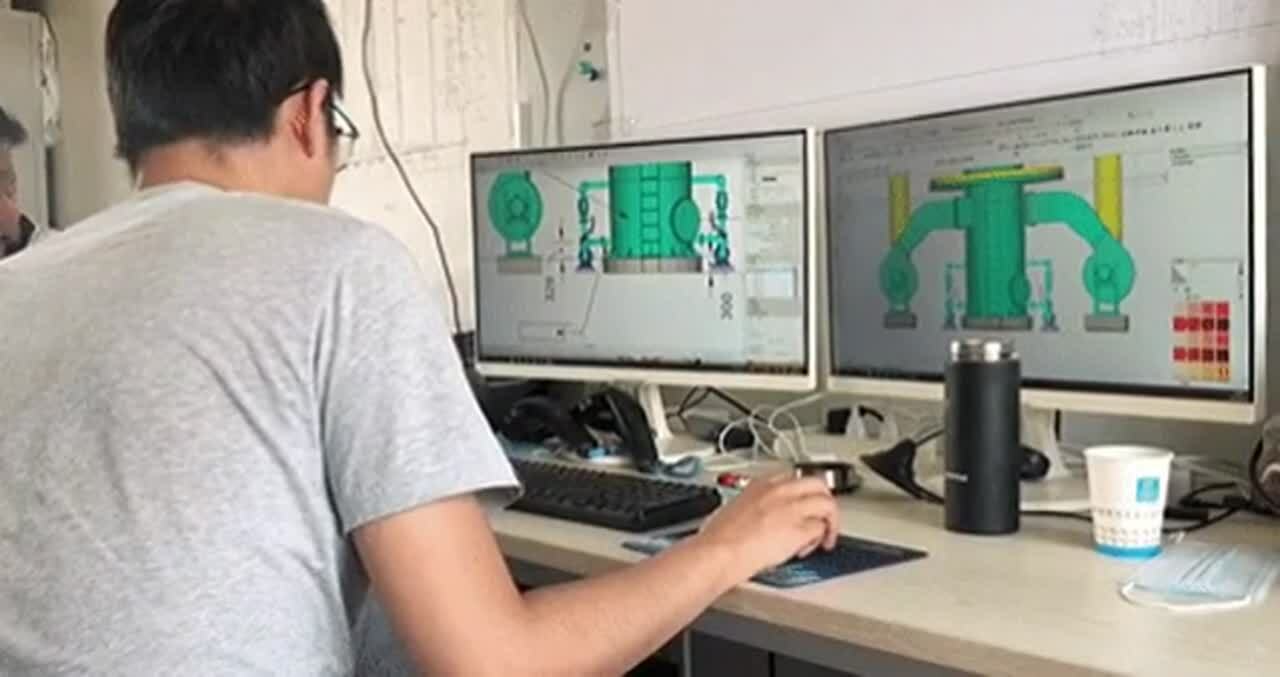
The function of the deodorization tower is being explained to the manufacturer using the model. Suggestions on technical parameters, materials, functions, space, prefabrication technology, installation methods, and construction time period, are plugged into the model, after the on-site visit.
Two types of drawings generated via LayOut. Colored drawings are useful for guiding the construction team, while the monochrome version is for review submission.
How did your work process help in attracting investors?
Yanbing: As we designed the park in 3D, it was very easy for investors to understand the design and be confident in what we were trying to achieve. Any part could be discussed in real-time and the actual cost was calculated automatically, unlike the manual calculations of conventional CAD drawings.
In such a big park that goes down to the details of a screw, we only had 200 pages of drawings — material details, contracts, facilities management included. With a detailed bill of materials (BOM), we provided our client with full visibility and control of the budget. We reallocated $30 million from the budget to invest in our ten patented processes to lower operating costs. This was our highest cost-saving because they are yearly recurring costs. By doubling up the production rate, we lowered the costs by another 40%. The project’s efficiency also helped the client to secure $244 million in funding from investments.
As we designed the park in 3D, it was very easy for investors to understand the design concept and be confident of what we were trying to achieve… We managed to save over $30 million from investments, which is 40% of the project cost.
Photograph of the plant (left) and SketchUp model (right).
Did you have to develop any extensions for this project?
Rong: SketchUp’s native tools were suitable for this project. We use Profilebuilder 3 for fixtures and components such as belts and columns. We also developed two plugins to calculate the BOM, and for project/facility management.
Share with us some examples of how VR/AR has supported your project.
Yanbing: We familiarized ourselves with VR technology over the last three to four years. We usually use VR at the project planning phase with our clients, and when there’s nothing at the construction site. The client and the project management team use it weekly onsite to check on the work.
During the construction phase, we use AR when fixed coordinations are in place to verify construction work. In big spaces such as this project, verifying onsite with AR is much faster and easier, as it is more straightforward than referring to the space with complex 2D construction drawings.
Whenever there is something that a worker is unsure of, they’ll simply whip out their phone to verify and go back to work. It’s a paperless execution for the project management team as there’s no need for 2D or paper drawings. If there’s a need, the team can just send the drawings on WeChat (messaging app); there’s no lag. And the workers send back a photo of the actual work onsite.
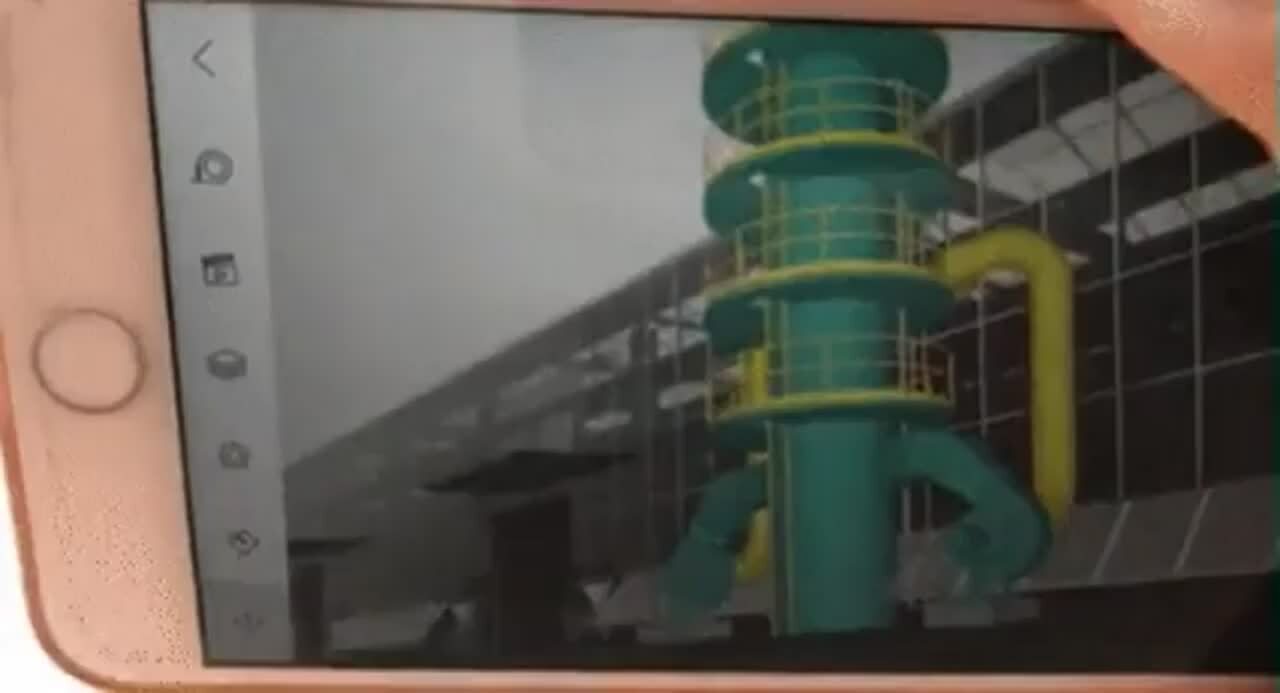
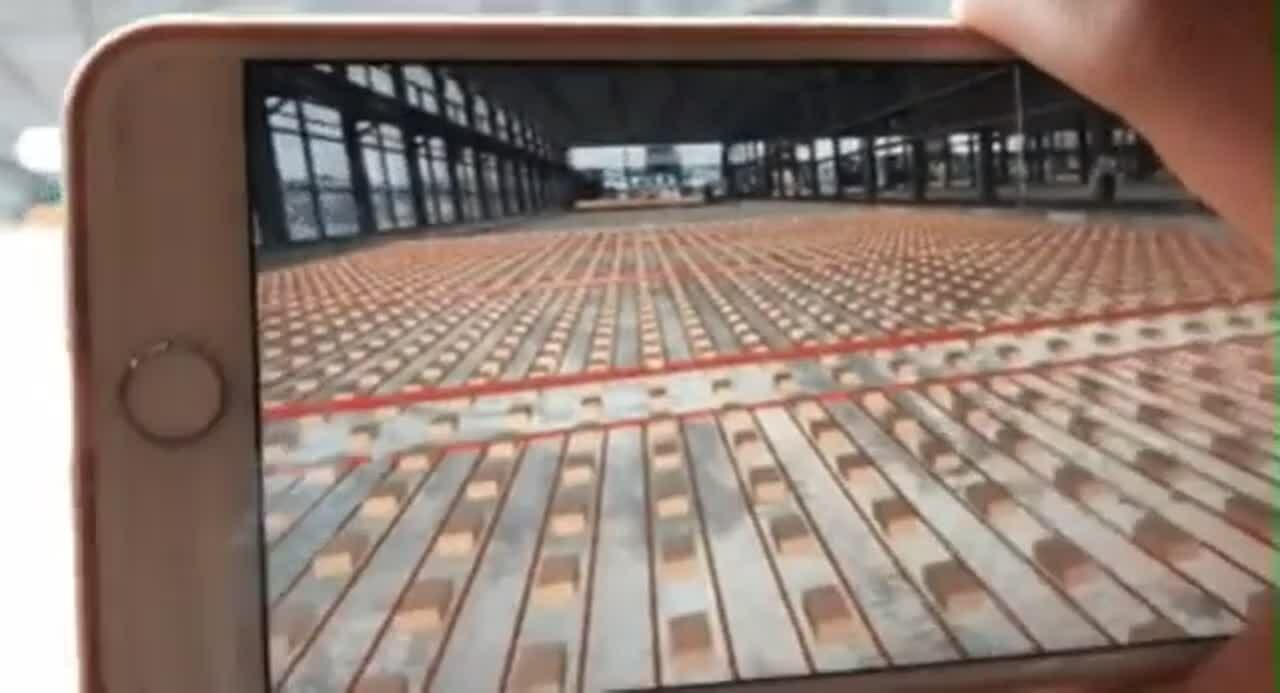
Workers leverage the AR feature of the SketchUp Mobile Viewer App on the job site.
Whenever there is something that a worker is unsure of, they’ll simply whip out their phone to verify and go back to work. It’s a paperless execution for the time and space management team as there’s no need for 2D or paper drawings.
We’re definitely looking forward to using Construction Layout Robotics Total Station and Trimble XR10 Mixed Reality for a high-efficiency, zero-error solution.
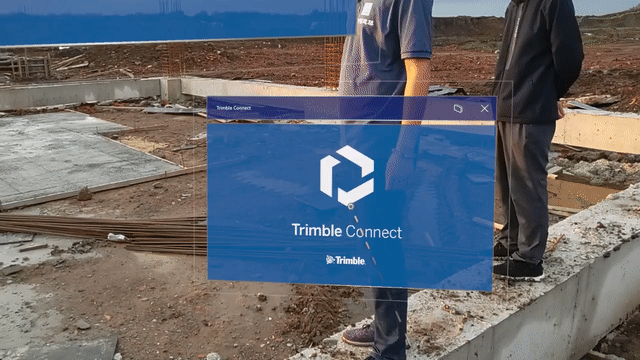
SketchUp's customer success manager, Leo Zhang, initiating a Mixed Reality (MR) demo with LeCheng at the construction site.
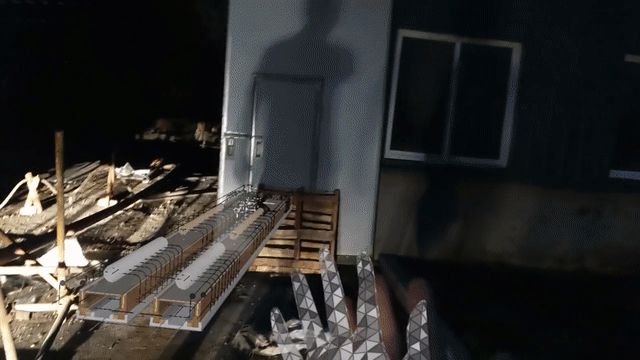
This video is recorded by Trimble XR10 Hololens, showing how the actual model will appear on-site.
Is there any methodology for providing maintenance on the projects you’ve completed?
Yanbing: Our value proposition to customers is to provide early warning signs maintenance support, rather than repairing when something fails. The safety issues in factories are usually caused by poor maintenance. If we choose to repair only when a problem arises, it will delay production. However, if we can foresee the maintenance period, we’d be able to estimate when the water flow might develop a problem. We can prepare the parts and plan the maintenance work in advance without affecting the production schedule.
Employees monitoring the plant on-site.
Most companies are unable to provide quality repairs or maintenance support because they cannot locate the correct location of the parts, especially the installed pipeline insulation which can’t be seen from the outside.
A screen showing the location of concealed units to provide a basis for precise maintenance.
SketchUp has an advantage because it’s able to embed coordinates by using an automatic IP location. The maintenance crew only has to scan the QR code to find the material specifications, repair manual, and where to get spare parts. It’s also easy to do off-site repairs because anyone who hasn't seen it would know which door to open, how to fix the damaged unit, etc.
If we didn’t use SketchUp, we’d be unable to locate the specific spot unless we find the person who constructed it. This is extremely time-consuming, manual, and costly.
A QR code is generated when a fault alarm rings. The QR code provides access to the maintenance manual, information on the fault source, twin positioning, navigation to the unit, and more, to enable quick repairs and reduce operating costs.
How has SketchUp transformed the way you work?
Yanbing: Although most people use SketchUp strictly for design, I use it for detailed cost control and project management. And after using it for a decade, I’d say that’s been the best advantage for me. In general, all facilities need to be utilized for decades. It’s the biggest challenge because they are costly investments and owners can’t afford to have any issues. Of course, the facility can be rebuilt, but that’s yet another huge investment because the information needs to be retrieved from the start to rebuild the model.
We utilize the BIM workflow with SketchUp, so information is embedded from scratch and therefore we won’t be incurring more costs.
We are able to offer a lifetime warranty on the facilities we build; with safety as our biggest factor and value proposition.
Dynamic Components with information embedded into the model.
The construction industry is highly competitive and a lot of decisions come down to price. However, my style is to provide a maintenance service, for about 30 years, with an annual fee for free repair parts. This annual recurring revenue enables us to manage business capacity and manpower easily, allows us to remain competitive, and guarantees premium safety for our clients.
Start modeling with a free 30-day trial or pick the right SketchUp subscription for your workflow.
About LeCheng Energy
LeCheng Energy is a leading energy service and solution provider in the field of heating and cooling in China. A specialist in the field of energy, environment, chemical and metallurgy engineering for environmental protection and conservation, the company prides itself on using clean and renewable energy using BIM workflow with SketchUp, and other Trimble technology for precision and quality control.